Ultimate Load and Tensile Strength of Self-Drilling Hollow Core Rock Bolts
Time:2025-09-26From:sinorock View:
In geotechnical anchoring projects, such as deep foundation pit support or slope reinforcement, understanding how self-drilling anchor bolts provide support and the factors affecting their ultimate load is critical to ensuring design safety and cost-effectiveness. Selecting rock bolts with insufficient load-bearing capacity may lead to structural deformation or failure, while overly conservative selections can result in unnecessary cost increases. This article provides a detailed explanation of the support mechanism of self-drilling hollow core rock bolts, focusing on two core parameters: ultimate load and tensile strength.
1. Understanding Core Concept
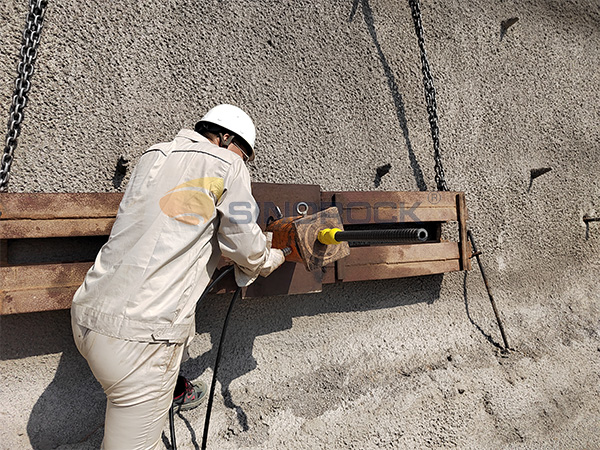
To accurately evaluate load-bearing capacity, it is essential to clearly distinguish between ultimate load and tensile strength, two concepts often confused.
1.1 Ultimate Load
The strength limit of the material also known as the minimum breaking load, the ultimate load refers to the maximum tensile force that a self-drilling anchor bolt can with stand at the moment of failure during a tensile test. It represents the inherent strength of the rock bolt material. The ultimate load serves as a theoretical benchmark for verifying material quality and calculating safety factors. In actual engineering, applied loads must never reach or approach this value to ensure safety.
1.2 Tensile Strength
Allowable working load commonly referred to as the design load or load-bearing capacity, tensile strength is the maximum daily working tensile force that the rock bolt can safely withstand under engineering conditions. It is a critical parameter used by engineers for structural design and rock bolt selection.
1.3 Safety Factor
Tensile strength is calculated by dividing the ultimate load by a safety factor greater than 1. using the formula:
Tensile Strength = Ultimate Load / Safety Factor
For temporary projects, the safety factor is typically 1.5 to 1.8.
For permanent projects, a higher safety factor, usually 2.0 or greater, is required to ensure long-term stability.
2. How to Evaluate the Load-Bearing Capacity of Self-Drilling Anchor Bolts
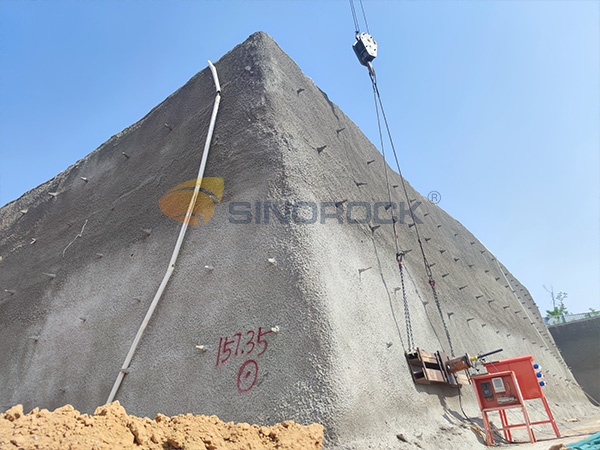
To accurately assess the load-bearing capacity of self-drilling anchor bolts, follow these steps:
2.1 Determine Ultimate Load
Material Testing: Conduct tensile tests on the rock bolt to measure its ultimate load, typically provided by the manufacturer and verified through laboratory testing.
Specification Check: Confirm the material grade (e.g., high-strength steel) and diameter, which directly affect the ultimate load. Common ultimate loads for self-drilling anchor bolts range from 200 kN to over 1000 kN, depending on size and material.
2.2 Assess Geological and Load Conditions
Site Investigation: Analyze site geological conditions, including soil or rock type, ground water conditions, and potential dynamic loads (e.g., seismic activity).
Load Requirements: Calculate the expected loads on the rock bolt, including static loads (e.g., soil pressure) and dynamic loads (e.g., construction vibrations), to determine the required tensile strength.
2.3 Select Appropriate Safety Factor
Choose a safety factor based on the project type (temporary or permanent), environmental conditions, and regulatory requirements. Refer to relevant standards to ensure compliance. For example, in complex or uncertain geological conditions, a higher safety factor is recommended.
2.4 Calculate Tensile Strength
Use the formula: Tensile Strength = Ultimate Load / Safety Factor, to calculate the allowable tensile strength and verify whether it meets or exceeds the project’s load requirements. For example, an ultimate load of 500 kN with a safety factor of 2.0 yields a tensile strength of 250 kN.
2.5 Field Testing and Validation
Pullout Testing: Conduct on-site pullout tests to verify the rock bolt’s performance under specific geological conditions, ensuring it meets the required tensile strength.
Grout Quality: For self-drilling anchor bolts, the grouting process significantly affects load transfer. Ensure pressure grouting enhances the bond between the rock bolt and surrounding soil or rock.
3. Design Considerations for Self-Drilling Anchor Bolts
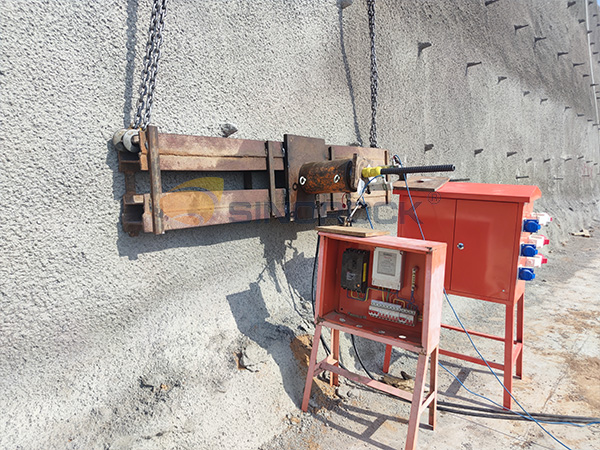
3.1 Integrated Process
Self-drilling anchor bolts feature a corrugated surface and hollow core design, combining drilling and anchoring to streamline construction and reduce time. This is particularly suitable for loose or fractured strata, enhancing bonding with grouting materials and load transfer capacity to meet project load requirements.
3.2 Site-Specific Analysis
Conduct detailed geotechnical surveys to determine shear strength, groundwater conditions, and fracture distribution to selection of rock bolt diameter, anchorage length, and grouting pressure.
3.3 Field Testing
Perform pullout tests to verify the rock bolt’s performance under actual site conditions, ensuring the ultimate load meets design requirements.
3.4 Cost Optimization
While meeting safety requirements, select rock bolts with tensile strength that meets but doesn't excessively exceed project needs. Balance rock bolt specifications (diameter, length, and wall thickness) with project requirements to avoid unnecessary costs.
4. Conclusion
Self-Drilling Hollow Core rock bolts provide robust support for geotechnical engineering projects by integrating drilling, installation, and grouting into an efficient process. Their ultimate load is determined by the frictional interaction between the rock bolt, grout, and surrounding rock or soil, influenced by factors such as rock bolt diameter, anchorage length, geological shear strength, grouting pressure, and wall thickness. By carefully evaluating these factors and optimizing designs based on site conditions, engineers can ensure the safety, reliability, and cost-effectiveness of deep foundation pit support and slope reinforcement projects.
latest news
-
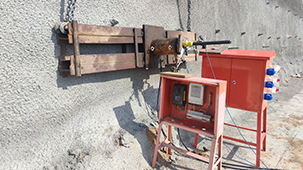
- Ultimate Load and Tensile Strength of Self-Drilling Hollow Core Rock Bolts
- Time:2025-09-26From:This Site
- Explains self-drilling hollow core rock bolt support mechanism, focusing on the distinction between ultimate load and tensile strength. It covers material testing, safety factor selection, and on-site validation steps. Learn how to optimize bolt selection through geological analysis, pullout testing, and cost efficiency for safe, reliable engineering.
- View details
-
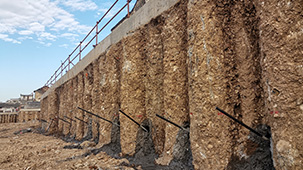
- Self-Drilling Anchor Bars in Foundation Support: Applications and Benefits
- Time:2025-09-24From:This Site
- Self-drilling anchor bars in proactive support, deformation control, and composite support systems, as well as their significant advantages over traditional anchors in challenging strata like sandy or pebble layers.
- View details
-

- Self-Drilling Anchor Bolts for Preventing Tunnel Collapses in Soft Ground
- Time:2025-09-23From:This Site
- Self-drilling anchor Bolts prevent tunnel collapses in soft ground. Learn SDA bolts applications, working principles, construction methods, and advantages over traditional support for enhanced safety and cost-efficiency.
- View details
-

- Sinorock 2025 Quality Month | Strengthening Quality Foundations, Empowering Product Excellence
- Time:2025-08-13From:This Site
- Sinorock’s 2025 Quality Month, themed “Strengthening Quality Foundations, Empowering Product Excellence,” successfully concluded, reinforcing our commitment to superior product quality.
- View details
-

- Sinorock Safety Month 2025 | Everyone Speaks Safety, Everyone Can Respond
- Time:2025-07-03From:This Site
- Sinorock Safety Month 2025, centered on the theme "Everyone Speaks Safety, Everyone Can Respond - Spot Workplace Hazards," has wrapped up successfully!
- View details
-
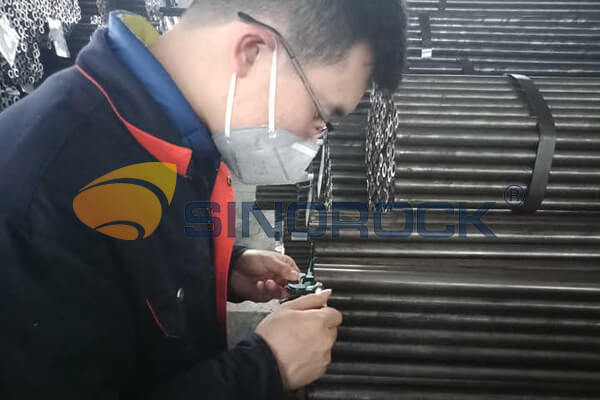
- Quality Control: the Vital Factor of A SDA Bolt Factory
- Time:2025-01-09From:This Site
- Sinorock’s comprehensive quality control system, from supplier management to outgoing inspections, ensuring the highest standards for self-drilling anchor bolts in construction.
- View details
-

- SINOROCK to Showcase Innovative Mining Solutions at Mining and Metals Central Asia 2025
- Time:2025-09-09From:This Site
- We are pleased to share that SINOROCK will participate in the Mining and Metals Central Asia 2025, taking place from September 17 to 19 at the Atakent International Exhibition Centre in Almaty, Kazakhstan. You can find us at Booth 11-231.
- View details
-

- Sinorock Invites You to Explore Proven Self-Drilling Anchor Bolt Solutions at bauma 2025
- Time:2025-03-07From:This Site
- From April 7–13, 2025, explore Sinorock’s Self-drilling anchor bolt solution at Booth C2.513/4 in Hall C2 of the Messe München Exhibition Center (Munich, Germany).
- View details
-
.jpg)
- SINOROCK to Attend EXPOMINA PERÚ 2024 in Lima, Peru
- Time:2024-08-10From:This Site
- Sinorock to Attend EXPOMINA PERÚ 2024 in Lima, Peru
- View details
 Download
Download 


